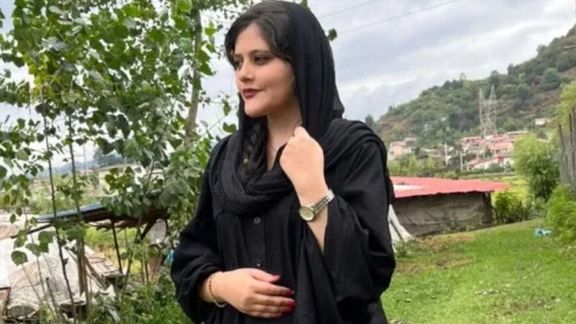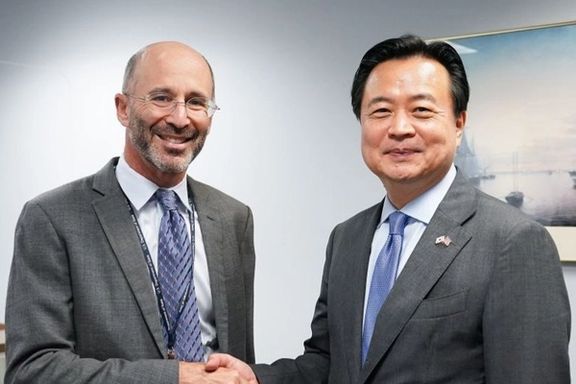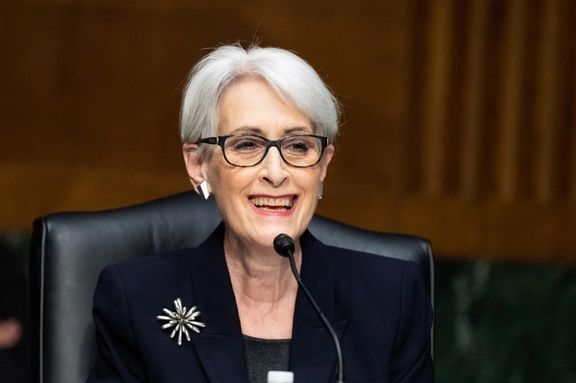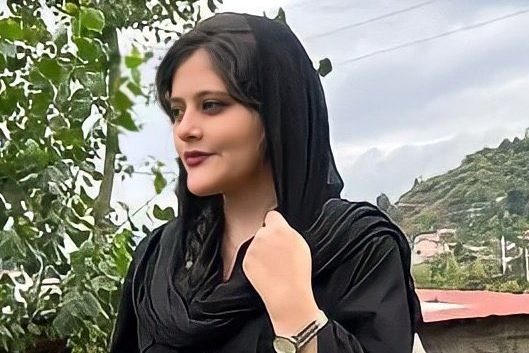Over 33 Protesters Injured In Iran Following Death Of Hijab Victim

At least 33 people, including several teenage girls, have been injured as security forces attacked people protesting the death of a young woman in the custody of hijab police.

At least 33 people, including several teenage girls, have been injured as security forces attacked people protesting the death of a young woman in the custody of hijab police.
According to the Hengaw Human Rights Organization, a Kurdish rights group, on Sunday an 18-year-old man lost one of his eyes after being hit with shot gun bird shots and four others have been transferred to a hospital in Tabriz because their conditions were so critical they could not be treated in Saqqez in Kurdistan province, the hometown of the victim.
The 22-year-old Mahsa Amini who was arrested on Tuesday by the morality police, was taken to hospital two hours later after losing consciousness. She passed away Friday afternoon at Kasra Hospital in Tehran for severe damage to her brain.
Hospital staff told Iran International that Amini received repeated blows to her head and was near death when she was brought in.
Protests are taking place in the provincial capital Sanandaj as well in several locations in Tehran since her death, with people chanting slogans against the authorities, including the Supreme Leader.
Iranian students at University of Tehran held a protest rally on Sunday, chanting “From Kurdistan to Tehran: The Entire Iran Covered in Blood.”
Fifteen Iranian activists who were going to hold a gathering outside the Parliament’s building in Tehran in protest at the death of Amini have also been arrested, while sporadic clashes are being reported from several cities across the country.

Iran’s Supreme Leader Ali Khamenei met with Ebrahim Raisi on Sunday, a day before the president is set to leave for the United States.
Khamenei wished success for Raisi on his forthcoming visit to New York to attend the 77th United Nations General Assembly.
Raisi also presented a report on the meetings and agreements he made during his recent visit to Uzbekistan for the 2022 Shanghai Cooperation Organization (SCO) summit, over which Khamenei also expressed content.
While the Biden administration is under mounting pressure to deny visa for the Iranian president, Raisi said he has no plans for either meeting or talking with his American counterpart Joe Biden, during his upcoming trip to New York.
"I do not think that such a meeting is going to take place," Raeisi told CBS News' 60 Minutes program during an interview conducted Tuesday, which the channel is going to broadcast in full on Sunday. When asked "Are you open to a meeting with President Biden? A face-to-face?" Raisi said, "I don't believe having a meeting or a talk with him will be beneficial."
"The new administration in the US, they claim that they are different from the Trump administration," he said, adding, "They have said it in their messages to us. But we haven't witnessed any changes in reality."
The US Senate is also preparing a bill to bar all officials tied to the Supreme Leader, and the proposed bill is likely to attract bipartisan support. A bipartisan group of 52 US representatives wrote a letter to the White House earlier this month calling on President Joe Biden to deny "entry visas" for Raisi and his delegation.

Iran’s foreign ministry said Sunday that with, or without a nuclear deal Tehran is ready for a “prisoner exchange”, pending Washington’s agreement.
The spokesman of the ministry Nasser Kanaani told reporters in Tehran that agreements have been worked out between the sides “and now it is the decision of America whether this deal is implemented or not.” He was responding to a question whether the prisoner exchange scheme has been delayed because nuclear talks with the United States are stalled.
Kanaani did not give details of the prisoner exchange agreement he referred to.
Although both Iran and the United States have claimed that a prisoner exchange deal is not directly tied to the revival of the 2015 nuclear accord, the JCPOA, but indications are that the two issues are intricately connected.
In August, Iran International reported that Tehran’s chief nuclear negotiator, Ali Bagheri-Kani had given an off-the-record briefing to local reporters in Tehran about the outlines of a nuclear agreement drafted after 17 months of negotiations in Vienna.
He reportedly said that when a nuclear agreement is signed, and its implementation period begins Iran will release all US prisoners (hostages) once $7 billion worth of its assets frozen in South Korea are released. In fact, the issue of the $7 billion held by two South Korean banks due to US sanctions on Tehran, has been tied to the issue of hostages at least since last December.

Bagheri in his briefing also told reporters that Iran and the US had earlier agreed on this, but Washington reneged on its promise, assuming that the money will give Iran financial breathing room to raise new demands in the nuclear talks.
This does not sound too much off the mark, since US officials have been in frequent talks with South Korean diplomats since 2021, when the fate of the nuclear talks were still uncertain.
In early January, Choi Jong-kun, first vice foreign minister of South Korea visited the venue of the nuclear talks in Vienna and held meetings with various delegations in what was an attempt to untie knots in the talks. Seoul has no involvement in the nuclear dispute, except the $7 billion of Iranian money it holds. Other countries also have frozen Iranian funds.
South Korea’s First Vice Foreign Minister Cho Hyundong visited Washington on Friday and met with top State Department officials, including US Special Envoy for Iran Rob Malley. The US envoy tweeted, “We thank the Republic of Korea for their close partnership, including their efforts to help ensure the return of our wrongfully detained citizens in Iran and to reach a deal on JCPOA.”
It is not clear if the visit of the high-ranking Korean diplomat was mainly related to the Iran issue or the meeting with Malley was just one part of his visit, while other international issues such as tensions with China and the war in Ukraine were the main points of agenda for his visit.
The Biden Administration is under pressure to arrange the release of six American citizens and permanent residents held by Iran as of July. In addition there around 20 Western European citizens and residents also taken hostage since the JCPOA was signed in 2015.
But given widespread criticism of the administration’s policy to lift sanctions in order to restore some limits to Iran’s nuclear program, a hostage deal giving Iran $7 billion before a nuclear agreement would be politically costly for the Biden White House.

Wendy Sherman has defended President Joe Biden’s July executive order on the detention of Americans abroad and the choice of countries for the new ‘D’ notice.
The EO evoked the 1976 National Emergencies Act and empowered the Secretary of State to “publicly or privately designate or identify officials of foreign governments who are involved, directly or indirectly, in wrongful detentions,.”
In an interview with ‘Washington Post live,’ Sherman, a deputy secretary of state, highlighted as an example of the ‘emergency’ Secretary of State Antony Blinken’s introduction of the ‘D’ notice as a warning to travelling Americans.
Sherman said the notice was applied to a country that was “using the detention, unjust detention of Americans as leverage, economic leverage, geopolitical leverage.” She insisted the Biden administration was committed to “bring Americans home who are wrongfully detained.”
Families of those detained in US allies like Egypt or Saudi Arabia have saidthe US approach – the ‘D’ notice applies to Burma, China, Iran, North Korea, Russia, and Venezuela – is based on politics rather than concern for detained Americans. One relative told the Guardian newspaper in June that Blinken was guilty of “hypocritical cherry-picking.”
Sherman, however, said the ‘D’ indicator was attached to “countries that unjustly detain Americans over a period of time or in numbers.”
“It’s not every American who might be jailed, because sometimes Americans do things that are illegal, that are crimes, and it is not an unjust detention,” she explained.“But we look at things like have they gotten a fair trial, a fair judicial process…”

International human rights organizations and UN experts have repeatedly said that Iran engages in systematic unlawful imprisonment of foreigners and dual-nationals as hostages to gain leverage against Western countries. Usually, Tehran demands the release of people convicted for terrorism or other unlawful acts benefitting the Islamic Republic.
‘Brutal meetings’
Sherman said that her contact with relatives of four Americans detained in Iran had been “brutal meetings,” as it had been with Christine Levinson, the Central Intelligence Agency contractor who disappeared in Kish Island, Iran, in 2007 and who Washington believes is dead.
As Irans' President Ebrahim Raisi is scheduled to arrive in New York soon to attend the United Nations General Assembly, two former hostages in Iran and an ex-political prisoner have announced they will launch a civil lawsuit againt him in the United States.
Sherman, who during the administration of President Barack Obama was actively involved in negotiations leading to the 2015 Iran nuclear agreement, defended the current administration’s approach to reviving the agreement, the JCPOA (Joint Comprehensive Plan of Action).
Repeating the US assessment that Iran had given “a pretty tough response” in its latest input to negotiations mediated by the European Union, Sherman said President Joe Biden would “continue to look for ways to move forward as long as we believe that it makes sense to do so.”
The administration was “planning for any eventuality,” Sherman said. “Whether the deal happens or the deal doesn’t happen, the president still believes it is in our interest to pursue the deal, and we’ll continue to do so as long as that is the case.”
The deputy secretary of state insisted that efforts to bring home American detainees from Iran was “a very high priority, the highest priority in many ways.” It was not dependent on whether the JCPOA was revived or not, she said.

A source from the hospital where a young Iranian woman died of brain trauma told Iran International that her brain tissue was crushed after "multiple blows" to the head.
The source said on Saturday that Mahsa Amini was taken to Kasra Hospital in capital Tehran while she was not responsive and brain dead.
The 22-year-old who was arrested on Tuesday by the Islamic religious police was taken to hospital two hours later after losing consciousness. She passed away Friday afternoon at Kasra Hospital in northern Tehran. Originally from Saqqez in Kurdistan province, Amini was arrested in her brother’s car on a visit to the capital to see their relatives.
The source added that her lungs were filled with blood when she was transferred to the hospital and it was clear that she “could not be revived."
This source emphasized that Mahsa's condition "was such that she could not be saved nor was surgery possible because her brain tissue was seriously damaged and it was clear that the patient was not injured by a single punch and must have received many blows to her head."
If a person's head is injured in an accident, the patient may have a chance to survive through removing the hematoma, but in the case of Mahsa, the damage was so extensive that surgery was not possible, the source said.
A photo of Mahsa on the hospital bed showed her unconscious with very clear signs of bleeding from her right ear. Several doctors including Mahdiar Saeedian, editor of a health magazine, have pointed out on social media that otorrhagia (hemorrhage from ears) proves that her coma was caused by trauma to the head.

Iran's Security forces attacked protesters Saturday after the burial of a young woman who died following a brain injury while in the custody of hijab police.
Footage from social media shows riot police directly aiming to fire at protesters and throwing stones at them outside the city governor's office where they had gathered chanting anti-government slogans. Gunshots are clearly heard in videos posted on social media which also show the use of tear gas against protesters.
Originally from Saqqez in Kurdistan Province, the 22-year-old Mahsa Amini, known as Zhina to family, collapsed at a detention center two hours after her arrest by the morality police in Tehran. She passed away Friday afternoon at Kasra Hospital in northern Tehran.
A hospital source told Iran International Saturday evening that her brain tissue had been seriously damaged because of multiple blows to the head and there was no chance of surgery.
The source said authorities demanded that she be kept alive for longer than 24 hours to circumvent a legal requirement for an investigation by the coroner.
According to social media reports, several protesters were injured with shotgun birdshots. In one of the videos protesters are seen rushing a young man with head injuries to a nearby hospital. He has been identified as Kian Derakhshan and is still in hospital in critical condition.
Hengaw Human Rights Organization, a Kurdish rights group, has identified another young man seriously wounded by security forces in Saqqez as Parsa Sehat.
Protesters in Saqqez chanted “Down With the Dictator” and “Our Shame, Our Foolish Leader” at the burial ceremony attended by thousands of locals and later outside the governor’s office and a large banner with Supreme Leader Ali Khamenei’s photo was set on fire.
“Zhina was martyred. She was martyred for all the young people of this country and has opened the road to freedom for all of us,” her aunt wailed and cried in Kurdish at her grave as seen in one of the videos posted on social media. “Our darling Zhina, you will not die. Your name will become a symbol,” a temporary stone to mark the young woman’s grave read.
Activists say the family resisted pressure from security and intelligence forces who wanted to bury their daughter under the cover of darkness to avoid a gathering of people at the cemetery where many of the female participants in the ceremony later removed their headscarves and waved them chanting slogans against compulsory hijab.
Social media reports also indicate that security forces fired tear gas at protesters in Sanandaj, capital of Kurdistan Province, where thousands of angry residents took to the street Saturday evening to protest the young woman’s death in custodyand against forced hijab for which she was arrested.
“Saqqez is not alone, Sanandaj Stands With It,” Protesters in Sanandaj chanted in the local Kurdish language. They also shouted “scoundrels” in Persian at security forces.
According to social media reports, the government has dusruptd internet access in the Kurdish cities of Saqqez, Baneh, Marivan, and Sanandaj. Global internet watchdog Netblocks also said Friday evening it had registered a significant internet outage in Tehran with real time network data showing connectivity at 67% of ordinary levels amid protests over Amini’s death in the capital which could affect coverage of events on the ground.